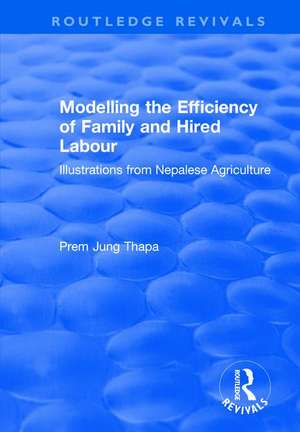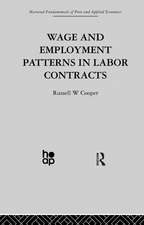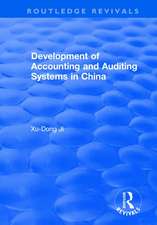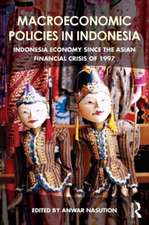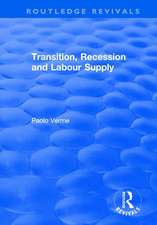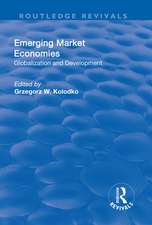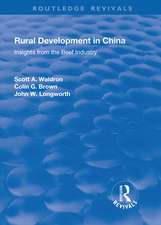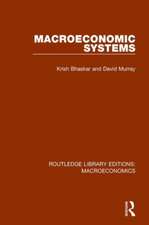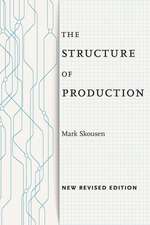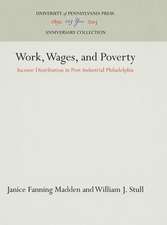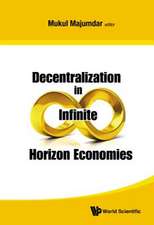Modelling the Efficiency of Family and Hired Labour: Illustrations from Nepalese Agriculture: Routledge Revivals
Autor Prem Jung Thapaen Limba Engleză Hardback – 27 oct 2017
| Toate formatele și edițiile | Preț | Express |
|---|---|---|
| Paperback (1) | 190.88 lei 6-8 săpt. | |
| Taylor & Francis – 29 oct 2019 | 190.88 lei 6-8 săpt. | |
| Hardback (1) | 655.48 lei 6-8 săpt. | |
| Taylor & Francis – 27 oct 2017 | 655.48 lei 6-8 săpt. |
Din seria Routledge Revivals
- 9%
 Preț: 801.71 lei
Preț: 801.71 lei - 8%
 Preț: 432.64 lei
Preț: 432.64 lei -
 Preț: 168.89 lei
Preț: 168.89 lei -
 Preț: 245.88 lei
Preț: 245.88 lei -
 Preț: 309.79 lei
Preț: 309.79 lei -
 Preț: 258.73 lei
Preț: 258.73 lei - 9%
 Preț: 764.35 lei
Preț: 764.35 lei - 9%
 Preț: 903.42 lei
Preț: 903.42 lei -
 Preț: 311.18 lei
Preț: 311.18 lei -
 Preț: 357.45 lei
Preț: 357.45 lei - 9%
 Preț: 626.93 lei
Preț: 626.93 lei -
 Preț: 317.54 lei
Preț: 317.54 lei - 9%
 Preț: 764.30 lei
Preț: 764.30 lei -
 Preț: 257.01 lei
Preț: 257.01 lei -
 Preț: 238.40 lei
Preț: 238.40 lei -
 Preț: 259.48 lei
Preț: 259.48 lei - 9%
 Preț: 938.10 lei
Preț: 938.10 lei -
 Preț: 341.33 lei
Preț: 341.33 lei -
 Preț: 264.10 lei
Preț: 264.10 lei -
 Preț: 294.98 lei
Preț: 294.98 lei -
 Preț: 308.89 lei
Preț: 308.89 lei -
 Preț: 207.40 lei
Preț: 207.40 lei -
 Preț: 347.50 lei
Preț: 347.50 lei -
 Preț: 302.59 lei
Preț: 302.59 lei -
 Preț: 389.40 lei
Preț: 389.40 lei -
 Preț: 257.01 lei
Preț: 257.01 lei -
 Preț: 358.30 lei
Preț: 358.30 lei - 9%
 Preț: 640.91 lei
Preț: 640.91 lei - 9%
 Preț: 619.49 lei
Preț: 619.49 lei -
 Preț: 228.88 lei
Preț: 228.88 lei -
 Preț: 265.16 lei
Preț: 265.16 lei -
 Preț: 257.90 lei
Preț: 257.90 lei -
 Preț: 266.06 lei
Preț: 266.06 lei -
 Preț: 258.73 lei
Preț: 258.73 lei -
 Preț: 384.01 lei
Preț: 384.01 lei -
 Preț: 246.38 lei
Preț: 246.38 lei - 9%
 Preț: 832.08 lei
Preț: 832.08 lei -
 Preț: 266.20 lei
Preț: 266.20 lei -
 Preț: 294.53 lei
Preț: 294.53 lei - 18%
 Preț: 695.86 lei
Preț: 695.86 lei - 9%
 Preț: 934.96 lei
Preț: 934.96 lei - 5%
 Preț: 243.38 lei
Preț: 243.38 lei -
 Preț: 274.69 lei
Preț: 274.69 lei -
 Preț: 208.20 lei
Preț: 208.20 lei - 9%
 Preț: 659.19 lei
Preț: 659.19 lei -
 Preț: 259.69 lei
Preț: 259.69 lei - 9%
 Preț: 1038.47 lei
Preț: 1038.47 lei -
 Preț: 389.46 lei
Preț: 389.46 lei -
 Preț: 302.14 lei
Preț: 302.14 lei -
 Preț: 302.27 lei
Preț: 302.27 lei
Preț: 655.48 lei
Preț vechi: 915.95 lei
-28% Nou
Puncte Express: 983
Preț estimativ în valută:
125.43€ • 136.67$ • 105.69£
125.43€ • 136.67$ • 105.69£
Carte tipărită la comandă
Livrare economică 23 aprilie-07 mai
Preluare comenzi: 021 569.72.76
Specificații
ISBN-13: 9781138712201
ISBN-10: 1138712205
Pagini: 236
Dimensiuni: 152 x 219 x 19 mm
Greutate: 0.6 kg
Ediția:1
Editura: Taylor & Francis
Colecția Routledge
Seria Routledge Revivals
Locul publicării:Oxford, United Kingdom
ISBN-10: 1138712205
Pagini: 236
Dimensiuni: 152 x 219 x 19 mm
Greutate: 0.6 kg
Ediția:1
Editura: Taylor & Francis
Colecția Routledge
Seria Routledge Revivals
Locul publicării:Oxford, United Kingdom
Cuprins
Contents: Introduction: Motivation; The research question; Estimation methodology; The setting; Chapter outline. Background and Literature Review: Background issues; Literature review; Summary. A Farm Household Model with Heterogeneous Labour Inputs: Introduction; Analytical structure of a model with heterogeneous labour; Aggregating labour inputs and production function separability; A farm household model with heterogeneous composite labour; Labour supply implications of heterogeneity; Summary. Estimation Strategy: General issues; The two step estimation strategy for a non-recursive model; A two step estimation strategy with heterogeneous labour; Error correction for the two step estimator; Summary. The Setting and The Data: The setting; The data set; Main variable definitions; Summary. Production Function Estimation Results and Tests for Labour Heterogeneity: Introduction; Data summary; Estimation and inference for farms using both family and hired labour; Testing for alternative aggregates of family and hired labour; Complete results for the linear composite labour model; Sensitivity analysis; Elasticities of substitution with a linear labour composite; Summary; Appendix 6: The translog specification with family and hired labour as independent inputs. Labour Supply Estimation Results: Introduction and motivation; Labour supply implications of linear heterogeneity; Data summary; Model specification and identification; Labour supply regression results: male family members; Labour supply regression results: female family members; Summary; Appendix 7: Complete labour supply regression results for selected model specifications. Summary and Conclusions: Overview; Summary of analytical results; Some implications; Suggestions for further research; Bibliography; Index.
Notă biografică
Prem Jung Thapa, Dr, Research School of Social Sciences, The Australian National University, Canberra, Australia.
Recenzii
’This book makes an important contribution to the economics of rural labour markets in developing countries. Its findings have implications for a range of policy issues, including the effects of land reform.’ Professor Peter Warr, Australian National University, Australia ’Scholars interested in issues of family-based agriculture and agricultural development in Nepal and other developing countries will find this book stimulating and useful. The author makes an important contribution to the emerging literature on farm household decision making in traditional agriculture.’ Professor Anil Deolalikar, University of Washington, USA. '...Dr. Thapa's book breaks new analytical and empirical ground by providing an analytical foundation for such differences and tracing their implications for farm production and labour supply. This book should be mandatory reading for all interested in agricultural development in LDCs.' Professor Raghbendra Jha, Australian National University, Australia '...Dr Thapa's study enriches the empirically based literature in the agricultural economics of developing economies and will be welcomed everywhere by researchers and policy advisers concerned with development.' Professor Alan A. Powell, Monash University, Australia
Descriere
This title was first published in 2003.Family based agricultural/farm households are the principal form of economic organization in most developing countries. Empirical models of the agricultural household that recognize its dual role as a producer and consumer unit in a theoretically consistent manner have become essential tools for policy analyses. This book provides an important extension to the conventional farm household model by developing an analytical framework that allows for efficiency differences between family and hired labour inputs. The methodological novelty is to relate the shadow wage rate for family labour to the observed market wage rate for hired labour, allowing for the differential productivity of family and hired labour detected in the production function estimation.
